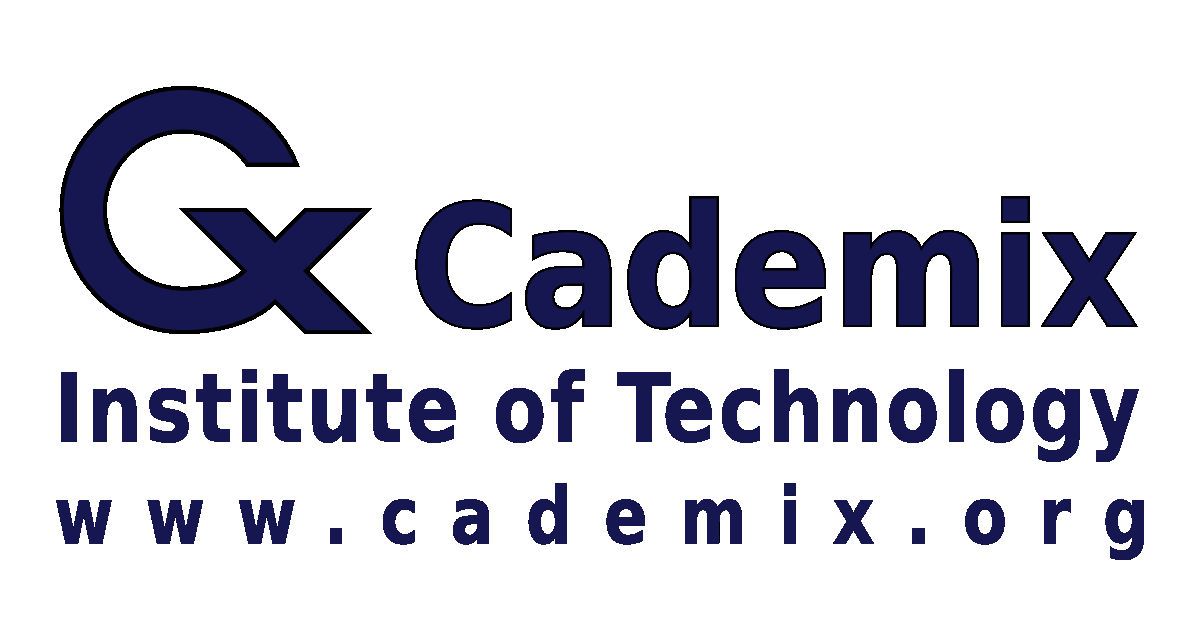Digital engagement has rapidly transcended its roots in entertainment to become a powerful force reshaping business models, consumer behavior, and the very nature of thought leadership. It is no longer a passive, one-way interaction of content delivered to a passive audience. Rather, digital platforms now empower users to become participants, collaborators, and even co-creators. This dynamic shift has far-reaching implications for businesses, influencers, and institutions across multiple sectors.
Where once engagement was a marker of marketing success or entertainment value, it now serves as an indicator of trust, authority, and social proof. Corporations increasingly recognize that every post, comment, or video triggers a feedback loop that can refine product development, brand identity, and even corporate values. Thought leaders, too, find themselves in a new environment where credibility is not solely dictated by academic credentials or institutional pedigree but by the ability to cultivate and sustain meaningful digital interactions.
In this article, we explore the expanded role of digital engagement—why it matters, how it has evolved from mere entertainment to strategic necessity, and how it shapes the emergence of modern thought leaders. We begin by examining the transition from passive consumption to active participation, highlighting the ways in which audiences now shape and influence content. We then delve into the business ramifications of an engagement-driven world, considering how brands and organizations can harness the power of interactive digital media to drive sales, deepen customer loyalty, and accelerate innovation. Turning to the ascent of digital thought leadership, we analyze the platforms, tactics, and mindsets that amplify an individual’s capacity to steer industry conversations. We also offer a range of strategies for maximizing digital engagement—spanning from interactive content formats and community-building approaches to algorithm-savvy distribution techniques. Finally, we consider what lies on the horizon for digital engagement, pondering the potential effects of new technologies like AI, VR, and decentralized content networks. The article concludes by underscoring the enduring significance of ongoing, authentic interactions in shaping both business success and the next wave of influential voices.
Keyphrases: Digital Engagement Strategy, Thought Leadership in Social Media, Business Influence Online
Table of Contents

Introduction
Digital engagement has revolutionized the way we communicate, learn, and conduct business. Gone are the days when organizations and professionals could simply broadcast information into the public sphere and hope it stuck. Today, engagement metrics—likes, comments, shares, watch times—serve as real-time indicators of how people respond to, internalize, and act upon content. The magnitude of this shift cannot be overstated: in a saturated media ecosystem, messages that fail to elicit meaningful interaction fade quickly, while highly engaging content can spark movements, define purchasing decisions, and influence entire industries.
Historically, the entertainment sector was the first to recognize engagement as a powerful currency. Social media influencers, YouTube creators, and gaming platforms relied on user feedback, subscriber counts, and community dialogue to refine and expand their offerings. However, as digital platforms grew into ubiquitous forums for everything from political discourse to professional networking, the concept of engagement broadened. It now stretches beyond entertainment into the core of modern commerce, education, and governance.
In the context of business, digital engagement has become a key performance indicator for a broad range of outcomes: brand awareness, customer loyalty, lead generation, and even employee morale. Enterprises spend vast resources optimizing their presence on platforms like LinkedIn, Twitter, YouTube, TikTok, and Instagram, each of which operates on distinct algorithms prioritizing certain types of interactions. This dynamic environment rewards businesses that adapt quickly and penalizes those that cling to static, outdated marketing strategies.
Parallel to corporate interests, public figures and entrepreneurs—aspiring to establish themselves as thought leaders—have discovered how digital engagement can catapult them into the spotlight. Through interactive live streams, crowdsourced research, and real-time debates on social platforms, thought leaders can bypass traditional media gatekeepers, connect with diverse audiences, and influence industry agendas.
Yet with these opportunities come challenges. Audiences are not just viewers but active participants who can readily criticize, shape, or even hijack a brand narrative. Skepticism and short attention spans compound the complexity of capturing and maintaining the public’s interest. Against this backdrop, digital engagement stands out not as a passing trend but as a reconfiguration of how relationships—between brands and consumers, influencers and followers—are formed and sustained. As we navigate the following sections, we will see that digital engagement has transcended the boundaries of entertainment, embedding itself as a core element of strategic success in business and thought leadership.
The Shift from Passive Consumption to Active Participation
From Broadcast to Dialogue
Traditional media formats like television, radio, and newspapers operated on a broadcast model: a small group of creators delivered messages to a large, relatively passive audience. Feedback loops were limited to the occasional letter to the editor, phone-in radio show, or third-party market research. While these forms of engagement offered some avenues for audience input, they were neither immediate nor universally accessible.
Digital platforms, conversely, have upended this dynamic by enabling continuous, real-time interaction. Social networks, blogs, and streaming services allow users to comment, react, and share content in a matter of seconds. The boundaries between producer and consumer blur as amateurs can become content creators themselves, while professional brands are compelled to respond and adapt to user feedback.
Emphasis on User-Generated Content
One significant hallmark of active participation is the explosion of user-generated content (UGC). Enthusiasts unboxing products, fans reviewing a new software update, or customers sharing creative ways to use a tool—these grassroots voices often carry more weight with consumers than polished corporate messaging. Recognizing this influence, brands now actively encourage UGC, running campaigns that invite users to submit photos, videos, or stories for promotional initiatives. By empowering the audience, companies foster a sense of shared ownership, driving deeper loyalty.
UGC’s influence is also evident in knowledge-sharing communities like Reddit or specialized forums, where participants answer questions, troubleshoot problems, and collectively refine community knowledge bases. For businesses, these organically formed micro-communities can offer invaluable market insights while simultaneously providing free, peer-to-peer customer support.
Interactive Experiences
Beyond text-based comments and reviews, active participation now includes a wide spectrum of interactive experiences. Live-streamed events on YouTube, Twitch, or LinkedIn often feature Q&A sessions where hosts field audience questions in real time. Virtual conferences and webinars incorporate polls, breakout rooms, and interactive whiteboards, transforming online gatherings from passive lectures into collaborative experiences. In the realm of e-commerce, features like shoppable livestreams or augmented reality (AR) try-ons let consumers engage with products in novel ways before making a purchase.
Such high levels of interactivity spark new forms of creativity and revenue generation. Brands partner with key influencers to host live product demos; educational institutions run virtual classes enriched by real-time conversation threads; activists coordinate global events with an immediacy that was once unimaginable.
Challenges of Active Participation
While empowering, this epoch of active participation also introduces complexities. The speed at which content circulates can quickly escalate minor issues into viral public relations crises. Businesses must be prepared to respond promptly and transparently to user feedback, positive or negative. Failure to do so risks a blow to credibility and goodwill.
Moreover, the democratization of content creation can lead to misinformation or brand identity dilution. Users who misunderstand or misrepresent a product can mislead others, requiring brand custodians to undertake a delicate balancing act—correcting inaccuracies without appearing overly controlling. Astroturfing campaigns and troll farms can fabricate community sentiment, further complicating the perceived authenticity of online engagement.
Ultimately, the shift from passive consumption to active participation has moved digital engagement to the forefront of strategic planning. Those who thrive in this environment recognize that an engaged user base not only drives views or sales but also shapes the brand’s narrative and fosters ongoing innovation.
The Business Impact of Digital Engagement
Brand Trust and Authority
In an increasingly crowded marketplace, trust is both elusive and essential. Engaged audiences can significantly bolster a brand’s credibility. When consumers interact positively with a brand—through supportive comments, reviews, or shares—they offer social proof that resonates more powerfully than any top-down advertising campaign. Indeed, platforms like G2, Capterra, and Yelp have become critical channels where peer reviews carry substantial weight in purchasing decisions.
Active, two-way communication plays a crucial role in establishing this trust. Brands that openly address questions and concerns demonstrate accountability, a quality that resonates deeply in an era of heightened skepticism. Regularly publishing transparent, behind-the-scenes content or prompt explanations in response to product issues can transform challenges into opportunities for rapport-building.
Sales and Conversions
Digital engagement also has a direct impact on revenue generation. The correlation is simple but powerful: an audience that engages more frequently with a brand is statistically more likely to convert, whether that means buying a product, subscribing to a service, or recommending a company to peers. Email click-through rates, webinar attendance, and average watch time on brand videos all function as leading indicators of potential sales.
E-commerce sites leverage interactive elements—like real-time chatbots or integrated social proof—and see tangible results in the form of higher conversion rates. Interactive product demonstrations or AR-based previews further reduce skepticism, encouraging confident purchasing decisions. Influencer partnerships add yet another layer: an influencer’s engaged following, built on trust and relatability, often translates into higher-quality leads and sustained sales.
Customer Retention and Loyalty
Retaining existing customers typically requires fewer resources than acquiring new ones, making loyalty a prized metric. Persistent engagement keeps a brand top-of-mind, reminding customers of the value and relevance the brand provides. Loyalty programs that encourage ongoing interaction—point systems, tiered rewards, exclusive community forums—are proven to reduce churn and increase customer lifetime value.
Moreover, an actively engaged customer base often evolves into a community. In these environments, customers feel an emotional connection, forging relationships with both the brand and each other. Such communities can become self-sustaining networks for mutual support, troubleshooting, and shared enthusiasm. The net result is not just higher retention but also a powerful word-of-mouth engine that lowers marketing costs.
Innovation Through Feedback Loops
One of the most underappreciated benefits of strong digital engagement is its capacity to fuel innovation. Through direct interactions—comment sections, surveys, user testing, or forum discussions—companies can gather near-instantaneous feedback on new features, product lines, or marketing approaches. This continuous dialogue helps identify pain points, refine functionality, and even spark entirely new ideas that might not emerge from in-house brainstorming alone.
Agile companies integrate digital feedback loops at every stage of the product lifecycle. Some even invite select customers to beta test offerings, creating a sense of co-ownership. The result: quicker iteration, reduced misalignment with market demands, and a deeper understanding of customer desires. Meanwhile, customers appreciate that their voices contribute to shaping the products or services they use, forging lasting loyalty.
Pitfalls and Risk Management
Despite the advantages, the high visibility of digitally engaged brands introduces reputational risks. Missteps—such as insensitive content, mishandled criticism, or data breaches—are amplified through viral sharing, rapidly escalating potential damage. Crisis management now unfolds in real time; a slow or evasive response can irreparably harm public opinion.
Moreover, unscrupulous competitors or malicious entities can exploit engagement channels to spread disinformation or stage coordinated harassment. Consequently, businesses must invest in robust moderation protocols and community guidelines to safeguard the integrity of their digital environments.
Overall, digital engagement wields transformative power over how businesses grow and sustain themselves. Through brand trust, direct conversions, customer loyalty, and innovation, meaningful interactions become the cornerstone of competitive advantage in the digital era.
The Rise of Thought Leadership in Digital Spaces
Democratization of Expertise
In previous decades, earning the status of a “thought leader” typically involved ascending hierarchical career ladders, publishing in academic journals, or obtaining coverage in prestigious media outlets. While these pathways remain relevant, social media and other digital platforms have lowered entry barriers. Individuals with fresh insights, compelling content, and the ability to spark meaningful engagement can quickly rise to prominence, regardless of traditional credentials.
This democratization of expertise allows independent consultants, start-up founders, and passionate enthusiasts to influence discussions alongside established experts. By consistently sharing high-quality, insightful posts or videos, newcomers can cultivate significant followings. In turn, these followings can propel them into speaking engagements, book deals, or brand collaborations, effectively launching them into recognized thought leadership roles.
Authentic Engagement as a Credibility Metric
In the digital realm, engagement metrics function as powerful proxies for influence. A high number of likes or shares can indicate resonance, but thoughtful comments and extended discussions signify deeper impact. Thought leaders who only broadcast information without engaging in dialogue risk being perceived as out of touch. By contrast, those who respond to comments, solicit feedback, and adapt their perspectives based on community input gain a reputation for authenticity and adaptability.
Platforms like LinkedIn, YouTube, and Twitter serve as primary arenas for professional thought leadership. Long-form articles, how-to videos, live stream debates—each format invites a specific kind of audience participation. Thought leaders who master platform-specific engagement strategies stand out, as they grasp not only the type of content that flourishes on each platform but also the tone, pacing, and format that best resonate with their target audience.
Building a Personal Brand
Digital thought leadership and personal branding go hand-in-hand. A compelling personal brand clarifies the topics, values, and expertise that define a thought leader, ensuring consistency across multiple platforms. Visual elements—like a logo, color palette, or style of cover image—help establish recognition. But the real differentiator is the tone and substance of content.
Leading voices often craft a distinct narrative that resonates with a particular niche. For instance, a tech entrepreneur might focus on ethical AI, blending personal anecdotes about founding a startup with industry insights on machine learning regulation. A public health expert could blend academic credentials with relatable stories of on-the-ground patient care. The personal brand emerges as a unifying thread, tying together content in a cohesive, meaningful way that audiences learn to trust.
The Role of Consistency
Consistency is critical for sustaining an audience’s engagement and trust. Thought leaders who periodically vanish from their platforms risk losing momentum, while those posting erratically may confuse followers. Conversely, regularly published content—be it weekly blog posts, monthly webinars, or daily short-form videos—builds anticipation and loyalty.
However, consistency does not imply rigidity. Thought leaders need to remain agile, responding to relevant news stories, emerging technologies, or shifting social sentiments. Balancing consistency with timeliness allows thought leaders to remain authoritative yet adaptable, meeting audience needs without sacrificing the coherence of their personal brand.
Challenges and Critics
Of course, rapid ascendancy to digital thought leadership has its pitfalls. Skepticism can arise if an individual appears to oversimplify complex topics or if they wield inflated credentials. Additionally, an echo chamber effect may occur when leaders cultivate an audience that uncritically agrees with every statement, limiting constructive debate and critical feedback.
Moreover, the public’s growing sensitivity to “performative” social media behavior means that grandstanding or insincere messaging can quickly backfire. Authentic thought leadership must be earned through consistent, genuine interactions rather than hollow posturing. The capacity to engage in dialogue, to admit mistakes, and to refine perspectives remains crucial for maintaining long-term influence.
Despite these risks, the heightened accessibility of thought leadership signifies a major cultural shift. The internet is now an expansive forum for the exchange of ideas, governed less by editorial gatekeepers and more by the tastes and judgments of engaged communities. Harnessed effectively, digital platforms can catapult dedicated individuals into impactful leadership roles that shape industries, policies, and collective mindsets.
Strategies for Maximizing Digital Engagement
1. Prioritize Interactive Content
Static, one-way content often fails to spark sustained attention. Instead, leveraging interactive elements can transform a post or video into a conversation starter:
- Polls and Surveys: Ideal for platforms like LinkedIn or Twitter, polls invite quick participation while gathering valuable audience insights.
- Live Q&A Sessions: Hosting real-time events on YouTube, Twitch, or Clubhouse encourages viewers to pose direct questions and clarifications.
- Interactive Infographics: Visually appealing graphics that allow users to click on data points or hover for extra context can deepen engagement.
Interactive content not only piques curiosity but also grants audiences a sense of collaboration and investment in the discussion. This sense of ownership motivates people to revisit and share the content, extending its reach.
2. Foster Community-Building
Building a community around a brand or idea is one of the most effective ways to drive ongoing engagement. Communities can take many forms:
- Private Groups: Whether hosted on Facebook, Slack, Discord, or LinkedIn, private groups create a sense of exclusivity, encouraging members to open up and share.
- Membership-Based Platforms: Subscription models on Patreon or Substack reward loyal followers with premium content while generating recurring revenue.
- Offline Extensions: Bringing the community together at conferences or meet-ups can bolster the sense of belonging cultivated online.
A successful community thrives on shared goals, mutual respect, and clear guidelines. Moderation is essential to maintain constructive dialogue, while regular content—such as weekly discussion prompts or expert AMA (“Ask Me Anything”) sessions—keeps energy levels high.
3. Adapt to Platform-Specific Algorithms
Each social media platform employs unique algorithms that rank content. Understanding these algorithms is key to boosting visibility:
- LinkedIn: Rewards professional conversations. Posts that spark extended comment threads tend to rank higher.
- Twitter: Favors real-time updates and hashtag-driven discovery. Timing posts to coincide with peak traffic can significantly improve reach.
- Instagram: Visual storytelling is paramount; reels and stories often outperform static posts, especially when they leverage trending audio or filters.
- TikTok: Emphasizes short-form, fast-paced videos with high retention rates. Creative hooks in the first few seconds can make or break a post’s performance.
Staying informed about algorithm changes—and iterating content strategies accordingly—enables continued relevance. Simple tactics, like using the right hashtags or posting at strategic times, can yield outsized engagement gains.
4. Encourage User-Generated Content
User-generated content humanizes a brand and fosters communal ties. UGC can include:
- Customer Testimonials: Inviting buyers to share their success stories with a product or service.
- Creative Campaigns: Contests or hashtag challenges that ask followers to interpret a brand message or share personal anecdotes.
- Collaborative Projects: Co-creating eBooks, webinars, or research with volunteers from the audience.
Beyond building rapport, UGC often has higher credibility among peers. When people see content from others who resemble them—rather than polished corporate ads—it resonates more deeply. This authenticity can trigger a cycle of further engagement, with new audiences discovering the brand through community-driven posts.
5. Leverage AI and Data Analytics
Data-driven insights are invaluable for refining engagement tactics. AI-powered platforms can reveal:
- Optimal Posting Times: Identifying when a specific audience is most active online.
- Sentiment Analysis: Gauging overall reactions to a campaign or piece of content, allowing for timely pivots if sentiment is negative.
- Content Topic Recommendations: Highlighting trending keywords or topical gaps where a brand can stand out.
Some advanced tools even offer predictive analytics, anticipating the type of content that might perform best with a given audience segment. Integrating these insights enables marketers and thought leaders to continually experiment, measure outcomes, and refine their strategies.
6. Maintain Authentic Interactions
In an environment saturated with automated messages and curated personas, genuine human interaction cuts through the noise. Thought leaders who respond personally to comments, or brands that acknowledge user feedback with empathy and clarity, are more likely to cultivate loyal supporters. Authenticity cannot be faked long-term; over time, insincerity or neglect become evident, damaging credibility.
This emphasis on authenticity extends to acknowledging mistakes. Whether it’s a delayed product release or an oversight in an article, transparency in taking responsibility can turn a potential crisis into a moment of positive engagement. People generally respect openness more than the appearance of flawless perfection.
The Future of Digital Engagement Strategy
Technological Innovations
The next frontier of digital engagement is being shaped by emerging technologies that promise increasingly immersive experiences:
- Virtual Reality (VR) and Augmented Reality (AR): These tools elevate audience interaction from two-dimensional screens to immersive, interactive environments. VR conferences, 3D product demonstrations, and AR overlays in physical retail spaces have the potential to revolutionize how consumers engage with brands.
- Artificial Intelligence (AI) and Machine Learning: Beyond analytics, advanced AI-driven chatbots can offer near-human conversational experiences. AI-generated content—such as dynamically personalized videos or interactive storylines—may blur the line between content creator and consumer.
- Voice Interfaces: As more households adopt smart speakers and voice assistants, voice-activated engagement will become a new channel for brand interaction, content dissemination, and community-building.
Although these innovations hold promise, they also introduce new challenges. Data privacy concerns, potential biases in AI algorithms, and the digital divide all demand ethical, user-centric solutions.
Decentralized Platforms and Web3
Another major shift looms in the rise of decentralized platforms and Web3 technologies. Blockchain-based social networks, peer-to-peer content distribution systems, and cryptocurrency reward models could reshape engagement dynamics by giving users direct ownership stakes or tokens within communities. In such ecosystems, content creators and participants might benefit financially from the engagement they generate, potentially redistributing how value is captured.
However, the decentralized model is not without obstacles. Regulatory uncertainty, technical barriers, and market volatility can hinder mass adoption. Additionally, establishing trust and consistency in decentralized communities poses a unique challenge, particularly as content moderation becomes more fragmented.
Evolving User Expectations
As the digital environment grows more sophisticated, so do audience expectations. Tomorrow’s consumers will likely demand:
- Immediate, Personalized Responses: Patience for standardized or delayed customer service may wane as AI bots improve.
- Inclusive and Ethical Engagement: Audiences increasingly scrutinize brands on social justice, sustainability, and diversity. Engagement efforts that appear opportunistic or lack sincerity risk backlash.
- Multi-Platform Consistency: While each platform has its own tone, values, and user base, audiences expect brand messages to remain coherent across channels.
Meeting these evolving standards will require agility, as well as continued investment in both technology and the human capital needed to manage complex engagement strategies.
Continuous Evolution of Metrics
Metrics measuring digital engagement will also become more nuanced. Basic counts of likes and shares, while still relevant, may not fully capture the depth and quality of interactions. Future analytics could integrate:
- Dwell Time: How long someone spends consuming or interacting with a piece of content.
- Quality of Comments: Distinguishing between generic praise versus thoughtful, constructive dialogue.
- Cross-Platform Influence: Mapping audience journeys across multiple social channels and digital touchpoints.
By refining these metrics, businesses and thought leaders can gain a more accurate understanding of their impact and refine their strategies accordingly.
Conclusion
Digital engagement has transcended its early association with entertainment to become the bedrock of modern business strategy and thought leadership. It represents a sea change, moving from passive consumption to a model where individuals actively shape brand narratives, co-create content, and hold significant sway over reputations. This interconnected ecosystem fosters communal ties, places authenticity at a premium, and demands rapid adaptation from anyone seeking to remain relevant.
The business implications are profound. An engaged community can propel a company’s growth through organic advocacy, continual feedback loops, and sustained loyalty. Meanwhile, for professionals and public figures aspiring to lead conversations, consistent and genuine engagement cultivates credibility that increasingly overshadows traditional credentials. Thought leaders who master the art of digital interaction find themselves at the helm of industry-shifting dialogues, influencing not only products and services but also the broader societal landscape.
Looking ahead, developments in AI, AR, VR, and decentralized platforms will further expand the scope and complexity of digital engagement. These emerging technologies promise an era of hyper-personalization and immersive experiences, yet they also demand conscientious design and ethical conduct. Moreover, audiences will continue to raise their expectations, rewarding those who demonstrate transparency, inclusivity, and genuine care.
In this context, digital engagement is not a one-time campaign or an accessory to a marketing plan. Rather, it is a continuous process of conversation, co-creation, and community-building. Its influence permeates how businesses innovate, how thought leaders gain and maintain relevance, and how global communities converge around shared passions. To overlook its power is to be relegated to obscurity in a marketplace defined by active participation. Conversely, those who recognize engagement as more than just a metric—indeed, as the central currency of online influence—stand poised to shape the future of industry, culture, and collective thought.












